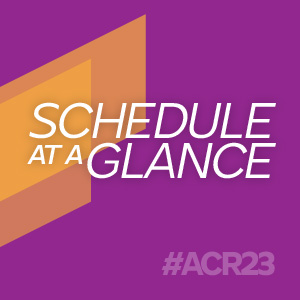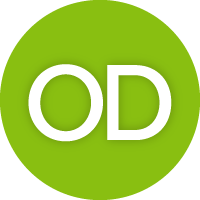Abstract Session
Professional development and education
Session: Abstracts: Professional Education (0763–0768)
0765: RheumMadness and TheMednet: The Impact of a Collaboration Between Independent Educational Initiatives
Sunday, November 12, 2023
2:30 PM - 2:40 PM PT
Location: Room 26A-B
- GK
Guy Katz, MD
Massachusetts General Hospital
Boston, MA, United StatesDisclosure(s): No financial relationships with ineligible companies to disclose
Presenting Author(s)
Guy Katz1, Melissa Briones2, Nina Couette3, Meridith Balbach4, Sabahat Usmani5, Lauren He6, Michael Macklin6, Iman Qaiser7, John Kellogg8, Courtney Bair8, Benjamin Lueck8, Akrithi Garren9, Matthew Sparks8, Lisa Criscione-Schreiber8 and David Leverenz8, 1Massachusetts General Hospital, Boston, MA, 2Loyola University, Maywood, IL, 3Genesis Healthcare System, Columbus, OH, 4Vanderbilt University Medical Center, Nashville, TN, 5Weiss Memorial Hospital, Chicago, IL, 6University of Chicago, Chicago, IL, 7Louisiana State University, Shreveport, LA, 8Duke University School of Medicine, Durham, NC, 9MedStar/Georgetown Washington Hospital Center, Silver Spring, MD
Background/Purpose: RheumMadness is an online tournament of rheumatology concepts that has been shown to engage learners using the Community of Inquiry (CoI) framework. theMednet is another online educational platform in which physician users submit clinical questions that are answered by experts in the field in an interactive question and answer forum. We sought to evaluate the educational impact of integrating content and engagement between these two independent learning platforms.
Methods: The 2023 RheumMadness tournament consisted of 22 teams of competing concepts that were presented as scouting reports written by trainees and rheumatologists. On the day that scouting reports were published, 7 clinically-focused questions relating to specific RheumMadness teams (6 curated by theMednet team, 1 user-submitted) were posted on theMednet along with expert responses. Leadership teams from both RheumMadness and theMednet publicized updates about each other's initiatives on their respective platforms. At the conclusion of the tournament, all participants, excluding leadership team members, were invited to complete a voluntary survey that assessed engagement in RheumMadness and theMednet as well as educational impact using the CoI framework. Surveys used Likert scores (1=very dissatisfied/strongly disagree, 5=very satisfied/strongly agree). Engagement in RheumMadness content on theMednet was examined and compared to that of its 5 most recent comparable educational programs. Statistical analyses were performed using Chi-square tests and unpaired T tests as appropriate.
Results: RheumMadness-related questions posted on theMednet and associated engagement are shown in Table 1; views per question ranged from 244 to 627, and number of poll voters per question from 53 to 80. When compared with the 5 most recent comparable educational programs on theMednet (Table 2), RheumMadness questions reached more users and institutions, and RheumMadness questions had significantly more views than questions from other educational programs (mean 459 vs. 249 views/question, respectively). Among RheumMadness participants, demographics and engagement with other RheumMadness curricular elements were similar between participants who engaged with theMednet content (n=24) and non-engagers (n=34), but CoI engagement was significantly higher in the overall cognitive presence and 3 of its components as well as the overall social presence among theMednet engagers (Table 3). Participants who engaged with theMednet Q&A reported that it contributed positively to the educational experience of RheumMadness (mean Likert score 4.25).
Conclusion: Establishing a collaboration between RheumMadness and theMednet strengthened learning in both programs. In addition to an effect of the collaboration, engagement with RheumMadness-related questions compared with previous educational programs on theMednet may have also been enhanced by the growing overall number of users over time and more varied nature of the topics presented in RheumMadness compared with previous programs. Collaborations between educational programs should be encouraged, as this may allow programs to reach broader audiences and accomplish more effective learning.
.jpg)
.jpg)
.jpg)
G. Katz: None; M. Briones: theMednet.org, 3, 11; N. Couette: None; M. Balbach: None; S. Usmani: None; L. He: None; M. Macklin: None; I. Qaiser: None; J. Kellogg: None; C. Bair: None; B. Lueck: None; A. Garren: None; M. Sparks: None; L. Criscione-Schreiber: GlaxoSmithKlein(GSK), 5, UCB, 5; D. Leverenz: Pfizer, 5, Rheumatology Research Foundation, 5, Sanofi, 2.
Background/Purpose: RheumMadness is an online tournament of rheumatology concepts that has been shown to engage learners using the Community of Inquiry (CoI) framework. theMednet is another online educational platform in which physician users submit clinical questions that are answered by experts in the field in an interactive question and answer forum. We sought to evaluate the educational impact of integrating content and engagement between these two independent learning platforms.
Methods: The 2023 RheumMadness tournament consisted of 22 teams of competing concepts that were presented as scouting reports written by trainees and rheumatologists. On the day that scouting reports were published, 7 clinically-focused questions relating to specific RheumMadness teams (6 curated by theMednet team, 1 user-submitted) were posted on theMednet along with expert responses. Leadership teams from both RheumMadness and theMednet publicized updates about each other's initiatives on their respective platforms. At the conclusion of the tournament, all participants, excluding leadership team members, were invited to complete a voluntary survey that assessed engagement in RheumMadness and theMednet as well as educational impact using the CoI framework. Surveys used Likert scores (1=very dissatisfied/strongly disagree, 5=very satisfied/strongly agree). Engagement in RheumMadness content on theMednet was examined and compared to that of its 5 most recent comparable educational programs. Statistical analyses were performed using Chi-square tests and unpaired T tests as appropriate.
Results: RheumMadness-related questions posted on theMednet and associated engagement are shown in Table 1; views per question ranged from 244 to 627, and number of poll voters per question from 53 to 80. When compared with the 5 most recent comparable educational programs on theMednet (Table 2), RheumMadness questions reached more users and institutions, and RheumMadness questions had significantly more views than questions from other educational programs (mean 459 vs. 249 views/question, respectively). Among RheumMadness participants, demographics and engagement with other RheumMadness curricular elements were similar between participants who engaged with theMednet content (n=24) and non-engagers (n=34), but CoI engagement was significantly higher in the overall cognitive presence and 3 of its components as well as the overall social presence among theMednet engagers (Table 3). Participants who engaged with theMednet Q&A reported that it contributed positively to the educational experience of RheumMadness (mean Likert score 4.25).
Conclusion: Establishing a collaboration between RheumMadness and theMednet strengthened learning in both programs. In addition to an effect of the collaboration, engagement with RheumMadness-related questions compared with previous educational programs on theMednet may have also been enhanced by the growing overall number of users over time and more varied nature of the topics presented in RheumMadness compared with previous programs. Collaborations between educational programs should be encouraged, as this may allow programs to reach broader audiences and accomplish more effective learning.
.jpg)
Table 1. Questions associated with RheumMadness teams on theMednet. DMARD: disease-modifying antirheumatic drug; ANA: antinuclear antibody; ANCA: antineutrophil cytoplasmic antibody; ULT: urate-lowering therapy; SLE: systemic lupus erythematosus; HCQ: hydroxychloroquine; RA: rheumatoid arthritis; HAQ: Health Assessment Questionnaire; CPPD: calcium pyrophosphate deposition disease; NSAIDs: nonsteroidal anti-inflammatory drugs; MSU: monosodium urate.
.jpg)
Table 2. Engagement with RheumMadness questions compared with the five other most recent educational programs on theMednet. *Values for five educational programs combined and reported as mean (SD) unless noted otherwise. Other educational programs were journal clubs consisting of questions relating to recent landmark publications with answers from manuscript authors and other experts.
.jpg)
Table 3. Educational impact of RheumMadness in theMednet engagers and non-engagers. All values reported as mean (SD) Likert scores (1=very dissatisfied/strongly disagree, 5=very satisfied/strongly agree) unless noted otherwise.
G. Katz: None; M. Briones: theMednet.org, 3, 11; N. Couette: None; M. Balbach: None; S. Usmani: None; L. He: None; M. Macklin: None; I. Qaiser: None; J. Kellogg: None; C. Bair: None; B. Lueck: None; A. Garren: None; M. Sparks: None; L. Criscione-Schreiber: GlaxoSmithKlein(GSK), 5, UCB, 5; D. Leverenz: Pfizer, 5, Rheumatology Research Foundation, 5, Sanofi, 2.



